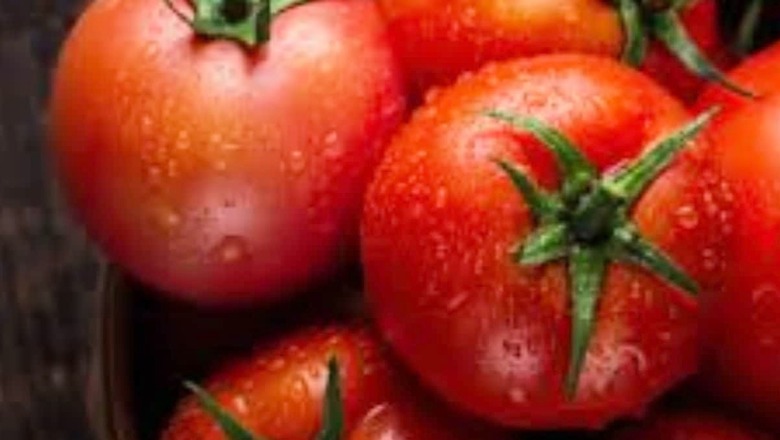
views
Farmers in Koppal, Karnataka are earning profit by cultivating tomatoes based on the model followed by the farmers of the Kolar district, Karnataka. According to Local 18 Karnataka, this model involves using high-quality tomatoes for cultivation and technology at a low cost. Currently, a tomato farmer is selling a crate for up to Rs 2500. Farmers are cultivating tomatoes in an area of 1,000 hectares in the Koppal district. Earlier, tomatoes were planted in the field here in the conventional way by sprinkling water on them. Due to this, more water was required. When the tomatoes were ripened, they fell to the ground, rotted and became waste. Also, the yield of the tomatoes was 600-800 trays per acre. But now, with the farmers following the Kolar model of cultivation, they can yield 1800 trays per acre which is benefiting them.
What is the Kolar model?
In this model, the farmers make a plastic cover for the plant’s base in the Kolar pattern. They then go for Kolar-style tomato cultivation, tying up each plant and placing mosquito nets scattered throughout the field. Mosquitoes are caught and killed in this trap. Thus, there is no one to harm the tomato crops and the yield is also high with this method. Ashoka Hindalmani, a farmer of Chittawadgi, says that the horticulture department is getting subsidies for mulching the plants. According to him, this and good prices for the tomatoes have prompted the farmers to grow tomatoes in Kolar style. Earlier, the farmers used to receive lower prices for their cultivation.
Krishna Ukkunda, deputy director of the horticulture department, says that tomato farmers should follow the Kolar model.
What is mulching?
Mulching is the process of covering the topsoil with plant material such as leaves, grass, twigs, crop residues, straw, etc. A mulch cover enhances the activity of soil organisms such as earthworms. It will also reduce the amount of water that evaporates from your soil, greatly reducing your need to water your plants. Mulch will break up the clay, and allow better water and air movement through the soil. It also provides nutrients to sandy soil and improves its ability to hold water.



















Comments
0 comment